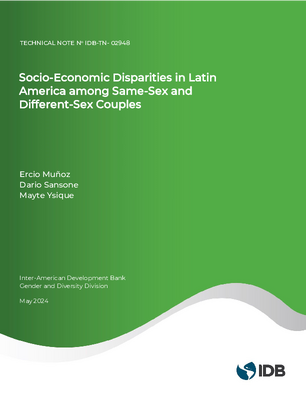Socio-Economic Disparities in Latin America among Same-Sex and Different-Sex Couples
Date
May 2024
Economic research on sexual minority individuals in developing countries has been constrained by the scarcity of nationally representative surveys asking about sexual orientation. This paper merges and harmonizes census data from eight Latin American countries to document socio-economic disparities between different-sex and same-sex couples. Overall, although there are some exceptions, individuals in same-sex couples are on average younger than women and men in different-sex couples, are less likely to identify as Indigenous (while differentials for African descendants vary by country), have higher education levels, and are less likely to live with children. Gaps in unemployment rates by couple type and sex differ by country. Both women and men in same-sex couples have higher average incomes in Brazil. The same holds for women in Mexico, while men in same-sex couples have lower average incomes. Finally, homeownership rates are lower among same-sex couples, while welfare differentials as proxied by ownership of assets and dwelling characteristics vary by country.
NO




